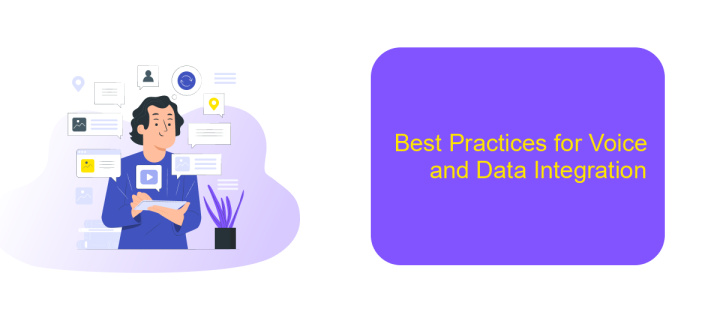Voice and Data Integration
Voice and data integration is revolutionizing the way businesses communicate and operate. By merging voice communication with data services, companies can streamline workflows, enhance collaboration, and reduce costs. This seamless integration not only improves efficiency but also provides a unified platform for managing various communication channels, making it an essential component for modern business success.
Introduction
Voice and data integration is a transformative approach that combines voice communication and data services into a single, cohesive system. This convergence streamlines operations, reduces costs, and enhances overall efficiency for businesses. By leveraging modern technology, organizations can now seamlessly manage voice calls, video conferencing, and data transfer through unified networks, fostering improved communication and collaboration.
- Enhanced operational efficiency
- Cost reduction through unified networks
- Improved communication and collaboration
- Seamless integration of voice and data services
As the demand for more versatile and integrated communication solutions grows, the importance of voice and data integration becomes increasingly evident. Businesses can benefit from the streamlined infrastructure, which not only simplifies management but also supports scalability. By adopting these integrated systems, organizations position themselves for future growth and adaptability in an ever-evolving technological landscape.
Benefits of Voice and Data Integration

Voice and data integration offers numerous benefits, including enhanced communication efficiency and cost savings. By combining voice and data networks, businesses can streamline their operations, allowing employees to access and share information seamlessly. This integration eliminates the need for separate communication systems, reducing infrastructure costs and simplifying maintenance. Additionally, integrated systems facilitate better collaboration and decision-making, as all relevant data and communication tools are accessible from a single platform.
Moreover, voice and data integration can significantly improve customer service. With integrated systems, customer service representatives can access comprehensive customer data while on calls, enabling them to provide more personalized and efficient support. Services like ApiX-Drive further enhance this integration by automating data synchronization between various applications, ensuring that information is always up-to-date and readily available. This leads to faster response times and higher customer satisfaction, ultimately contributing to business growth and success.
Challenges of Voice and Data Integration

Integrating voice and data systems presents numerous challenges that organizations must navigate to achieve seamless communication. These challenges range from technical complexities to issues of compatibility and security, each requiring careful consideration and strategic planning.
- Technical Complexity: Voice and data integration often involves intricate configurations and the need for specialized hardware and software, making it a technically demanding process.
- Compatibility Issues: Ensuring that different systems and devices can communicate effectively is a significant hurdle, often requiring extensive testing and adjustments.
- Security Concerns: Integrating voice and data increases the risk of security breaches, necessitating robust encryption and security protocols to protect sensitive information.
- Quality of Service (QoS): Maintaining high-quality voice and data transmission simultaneously can be challenging, often requiring sophisticated network management techniques.
- Cost: The financial investment required for integration can be substantial, covering both the initial setup and ongoing maintenance.
Addressing these challenges effectively requires a comprehensive approach, combining technical expertise with strategic planning. Organizations must prioritize robust security measures, ensure compatibility, and invest in high-quality infrastructure to achieve successful voice and data integration.
Best Practices for Voice and Data Integration

Integrating voice and data services effectively requires a strategic approach to ensure seamless communication and optimal performance. One of the first steps is to assess the existing infrastructure to identify any potential bottlenecks or compatibility issues that could hinder integration.
Next, prioritize network security to protect sensitive data and voice communications from potential threats. Implementing robust encryption protocols and regularly updating security measures are crucial for maintaining the integrity of your integrated system.
- Conduct a thorough network assessment.
- Ensure compatibility between voice and data systems.
- Implement strong encryption protocols.
- Regularly update security measures.
- Monitor performance and adjust configurations as needed.
Finally, ongoing monitoring and maintenance are essential to address any issues that arise and to adapt to changing requirements. By following these best practices, organizations can achieve a reliable and efficient voice and data integration, enhancing overall communication capabilities.


Conclusion
In conclusion, the integration of voice and data systems has revolutionized the way businesses operate, offering seamless communication and enhanced data management. By converging these two critical elements, organizations can achieve greater efficiency, reduce operational costs, and improve overall productivity. The advancements in technology have made it possible to integrate voice and data with minimal disruptions, ensuring that businesses can maintain their competitive edge in a fast-paced market.
Moreover, utilizing services like ApiX-Drive can significantly streamline the integration process. ApiX-Drive provides a user-friendly platform that automates and simplifies the connection between various applications, enabling businesses to focus on their core activities without worrying about technical complexities. As the demand for integrated solutions continues to grow, leveraging such tools will be crucial for companies looking to optimize their operations and stay ahead in the digital age.
FAQ
What is Voice and Data Integration?
Why is Voice and Data Integration important for businesses?
How can I ensure the security of my integrated voice and data systems?
What are the key challenges in implementing Voice and Data Integration?
How can I automate and streamline the integration process?
Routine tasks take a lot of time from employees? Do they burn out, do not have enough working day for the main duties and important things? Do you understand that the only way out of this situation in modern realities is automation? Try Apix-Drive for free and make sure that the online connector in 5 minutes of setting up integration will remove a significant part of the routine from your life and free up time for you and your employees.

